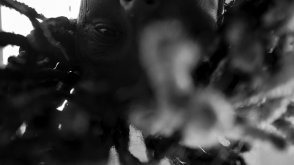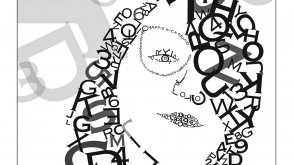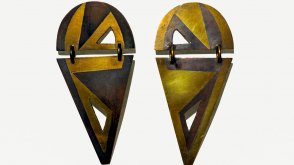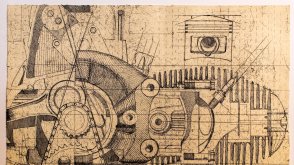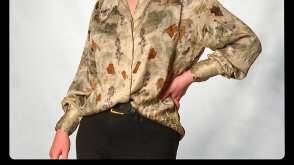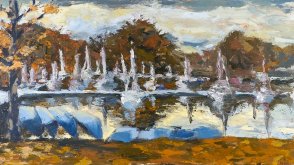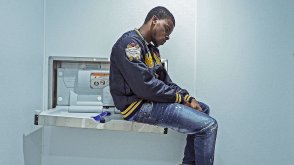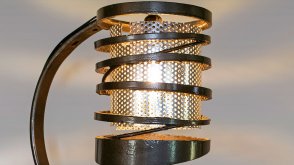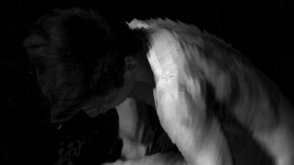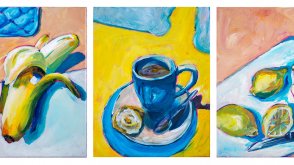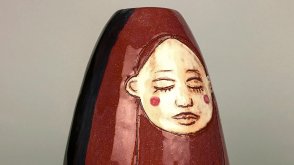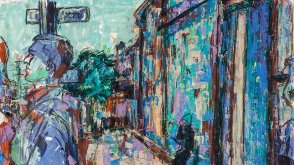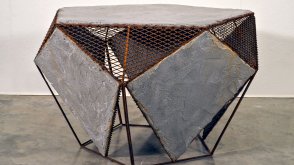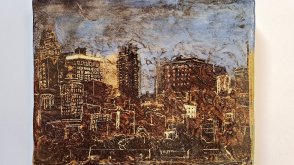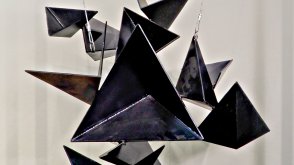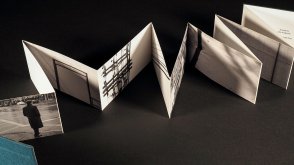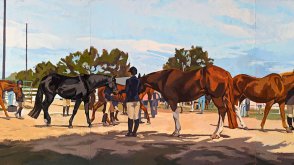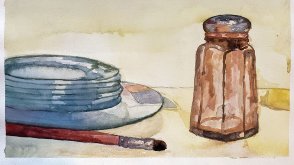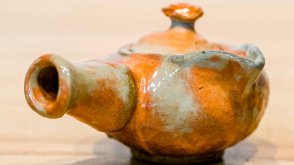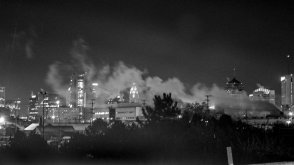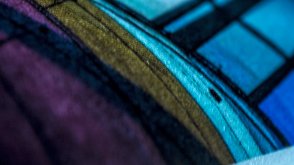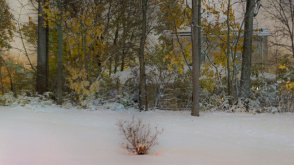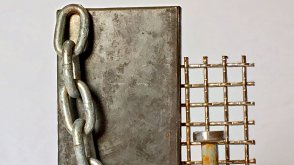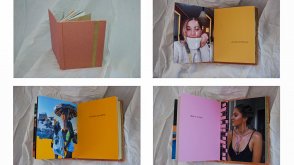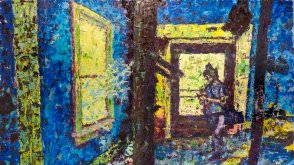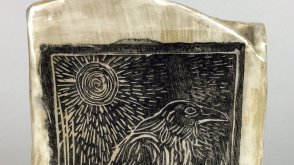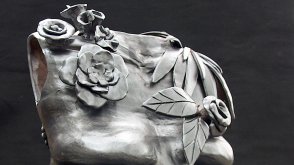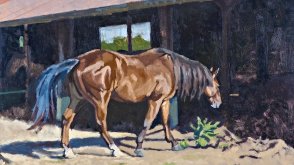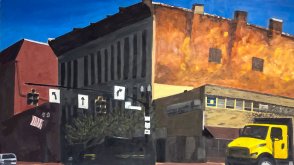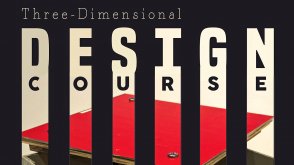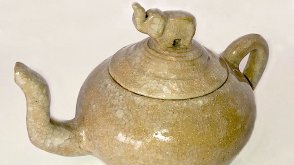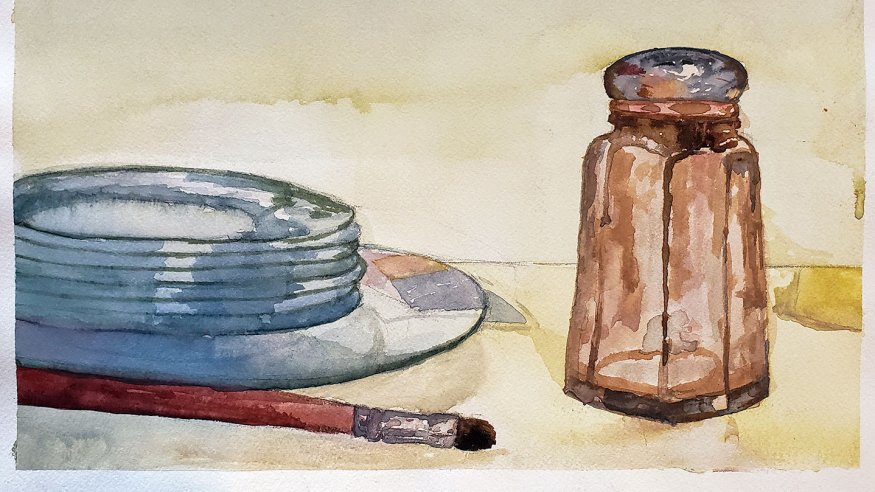
‘Becoming Visible’
Ohio Wesleyan’s Graduating Fine Arts Majors to Debut Online Senior Exhibition May 15
DELAWARE, Ohio – Though they aren’t on campus to exhibit their art, Ohio Wesleyan University’s graduating fine arts students have created “Becoming Visible,” an online showcase of their work.
Featuring pieces chosen by a jury of Ohio Wesleyan fine arts faculty, the exhibition includes paintings, drawings, sculpture, ceramics, photography, printmaking, jewelry, digital art, graphic design, and other art created by this year’s 16 graduating fine arts seniors.
Their senior art show, an OWU tradition, will debut at 5 p.m. May 15 with a live virtual opening and tour conducted by the students in collaboration with Erin Fletcher, director of Ohio Wesleyan’s Richard M. Ross Art Museum. The exhibit was created in collaboration with OWU Libraries and uses the Omeka software system. Visit owu.edu/BecomingVisible to learn more about the exhibit and to link to the live opening.
Graduating senior Jesse Sailer said the exhibit’s title was selected before the COVID-19 pandemic hit and has a deeper meaning for the emerging artists.
“Each student’s work is a reflection of how they have grown into their own and found their personal voice during their years at Ohio Wesleyan University,” Sailer said. “Although unforeseen circumstances hindered the ability for the senior class to have an in-museum and in-person exhibition, through preservation and dedication, faculty and students alike were able to put together the following virtual art show for your viewing pleasure.”
Graduating students “becoming visible” through their Ohio Wesleyan senior exhibition are:
- Iain Anderson of Monterey, California. Of his work, Anderson states: “I’m interested in creating works that evoke emotion and create connections to the viewer – many times by presenting the beauty that occurs naturally in the world. Many of my influences have been the photographers from the earlier half of the 20th century, such as Edward Weston and Ansel Adams, as well as the dramatic subject of the California central coast.”
- Frank Brown of Cincinnati, Ohio. Brown states: As an artist, my goal is to create and capture images that speak for themselves. I do not like to do too much extra talking, and like my art, I want my actions to speak for me. What does this image portray? What emotions arise when you see this picture? I believe things are most beautiful in their natural and most simple forms.”
- Devin Cotton of Cleveland, Ohio. Cotton states: “My work (in photography and ceramics) focuses on my various intersecting identities as they relate to the world around me, and how they coexist inside of me. … I construct pieces that are inspired by womanism, black women, black culture, and other things such as futuristic objects. I know my art will continue to evolve because I continue to develop an inner peace. and I will continue to try to truly understand who I am.”
- Michaela Fown of Marion, Ohio. Fown states: “Many of the subjects I use in my art are found in the landscape around me and have a connection to my hometown. … I like to focus on subjects that one may never consider as art and make it exactly that. My studies focus mainly on printmaking and graphic design. ... I am fascinated with manipulating images whether it is through a traditional printing process or on the screen digitally.”
- Rory Gleeson of New Plymouth, Ohio. Gleeson states: “My artwork is heavily based in process – the fitting together of layer after layer of color and chaos into a fairly cohesive whole. … Working mainly with oil and acrylic paint, I first create a wild abstract painting, and eventually form an image over top of it. ... My influences include the post-impressionist, expressionist, and action painting movements, as well as modern vaporwave and Lo-Fi aesthetics.”
- Charlotte Gross of Columbus, Ohio. Gross states: “Most of my life has been my falling into new loves without trying, and photography is no exception. … I want to create things that make viewers look at the world from different angles to see things more clearly. Most of my photography has part of the subject out of the frame, which forces the viewer to think more deeply about what they are seeing.”
- Cheyenne Hall of Columbus, Ohio. Hall states: My art may not representationally tell a story or metaphorically have a meaning, but I have found pure joy in creating artwork that not everyone may get to do or see. My work (in photography, painting, ceramics, and metals) is that of a person who can’t help but to focus on the little things in life, for which I think make the bigger picture.”
- Cameron Jaudzems of Ostrander, Ohio. Jaudzems states: “A large portion of my work is three-dimensional, focusing in sculpture. ... I have a deep fascination for mechanical objects and motor vehicles. … This also extends into my two-dimensional works in photography and printmaking. … I hope to draw people to appreciate the value of craftsmanship in what are typically factory productions.”
- Andrew McFarland of Mount Gilead, Ohio. McFarland states: “I have always strived to convey in my artwork the feeling of Wabi-Sabi, the idea of a single momentary experience that is forever fleeting and changing with time, whether said moment is a snubby spout pinched onto a teapot, the white highlights brought out of a mid-toned charcoal drawing or an oil painting landscape with thick choppy strokes.”
- Moira Meehan of Bay Village, Ohio. Meehan states: “With my work, I hope to explore the relationship between people and their environment. I am fascinated by the narratives that people tell themselves for the sake of comfort, and how disconnected they can be from reality. … Additionally, I seek to draw attention to aspects of our everyday life that are largely ignored, such as the design of everyday spaces and things, and the ways that we impact our natural world.”
- Jesse Sailer of Newtown, Connecticut. Sailer states: “The work that I have chosen for this show is heavy with human figure subject matter, which is ironic because I have always avoided the human form and face. I did this because I felt I couldn’t do perfect justice for something so beautiful, natural and singular. Finding my own style and realizing that perfection isn’t required, allowed me to approach the human form as I saw it.
- Mia Smith of Columbus, Ohio. Smith states: “With great expressionist influences, I aim to create my own physical evidence of daily existence with clay and drawing media. I have always utilized my art as a personal narrative of what my body and self are experiencing. Over time, my body of work has shifted to a more universal narrative through radical vulnerability, self-examination, and social education.”
- Kami Stoflinsky of Columbus, Ohio. Stoflinsky states: “My work demonstrates a soon-to-be art teacher becoming familiar with things that I can teach my own students. … [M]y process begins with planning. With any medium I use, typically paint, charcoal, and graphite, I begin by sketching out ideas. ... By exploring various techniques and styles and also studying artists and their works, I am able to share my exploration and teach my students.”
- Sarah-Faith Strait of Mount Gilead, Ohio. Strait states: “As a painter, regardless of the subject, my greatest priorities are expressive form, color, shape, rhythm, and texture. These elements play a crucial role in my decision-making process for creating a compelling composition and image. Throughout this process, I am fascinated by the layering of paint and mark-making that naturally occurs on the journey to achieving a final result.”
- Kate Van Horn of Montclair, New Jersey. Van Horn states: “Most of the subjects depicted in my art are reflections of the people and places that I love most. ... I’ve learned that sometimes the best way to articulate these things into my artwork may not be literally, but rather through elements of design. This is what lead me to declare my concentration in graphic design. … [M]y ultimate hope is that my pieces communicate a feeling of fulfillment, gratitude, and love.
- Chappie Wick of Norfolk, Massachusetts. Wick states: “Sometimes I pull inspiration from my childhood and the pop artists work I grew up around; while other times it is coming from my interests in architecture, design, and fashion. Typography, hierarchy, line, shape, and more, are essential design details in the work, helping me to begin expressing characteristics of myself … in my declared concentrations, graphic design and photography.”
Created in 1864, Ohio Wesleyan’s Department of Fine Arts was one of America’s first college art departments. Today, it offers both Bachelor of Arts (B.A.) and Bachelor of Fine Arts (B.F.A.) degrees. Learn more about the department, its majors and minors, and its faculty at owu.edu/finearts. Learn more about OWU’s Ross Art Museum at owu.edu/ross or connect on Facebook at www.facebook.com/RossArtMuseum.
Founded in 1842, Ohio Wesleyan University is one of the nation’s premier liberal arts universities. Located in Delaware, Ohio, the private university offers more than 90 undergraduate majors and competes in 25 NCAA Division III varsity sports. Through Ohio Wesleyan’s signature OWU Connection program, students integrate knowledge across disciplines, build a diverse and global perspective, and apply their knowledge in real-world settings. Ohio Wesleyan is featured in the book “Colleges That Change Lives” and included in the U.S. News & World Report and Princeton Review “best colleges” lists. Learn more at www.owu.edu.

